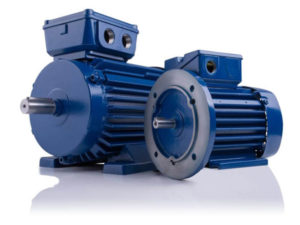up to 100 kW
-
Products
-
Applications
-
Contact
-
Service & Support
-
Career
DSG P
















up to 100 kW
up to 4000 rpm (higher speed on request)
up to 500 Nm
up to 500 VAC (phase-phase)
up to 200 A AC per phase
Terminal box / cable
IP55 (higher degree of protection on request)
Take a look at our animations for the steel, crane and port technology, and mining sectors! Click through our animations from a rough overview to the specific mounting location of an encoder and get direct suggestions for suitable encoder solutions.
The permanently excited synchronous generators DSG P convert a rotary motion into electrical energy with little loss. They offer particularly high efficiency in this energy conversion.
The generators have a high power density at low weight and, apart from the ball bearings, have no wearing parts.
The generators can be designed to meet requirements in terms of special voltage, design and shaft ends.
A typical application for synchronous generators is the provision of on-board voltage in trains. Leistungsdichte bei geringem Gewicht und haben, abgesehen von den Kugellagern, keine Verschleißteile.
Die Synchrongeneratoren können hinsichtlich Sonderspannung, Bauform und Wellenenden anforderungsgerecht ausgelegt werden.
Ein typisches Einsatzgebiet der Synchrongeneratoren ist die Bereitstellung der Bordnetzspannung in Zügen.

The permanently excited synchronous generators DSG P are characterized by a particularly high level of efficiency.
Thanks to their compact design, the permanently excited DSG P generators can be optimally integrated into new and existing systems.
The permanently excited synchronous generators DSG P offer a long service life and high system availability.
On request the permanently excited synchronous generators DSG P can be individually calculated and designed.

A DSG P three-phase synchronous generator consists of a stator, as known from the classic asynchronous machine, and a rotor equipped with permanent magnet segments. Due to the permanent excitation, it induces a voltage even at low speeds.
The frequency and the no-load voltage at the output of the three-phase synchronous generator rise and fall linearly with the speed. The power increases somewhat disproportionately to the speed. The torque is proportional to the current.
The permanently excited generators DSG P are designed to meet the respective customer requirements.
Feeding the generated power into an existing supply network requires an inverter that feeds the rectified voltage from the synchronous generator into the supply network at the correct frequency and amplitude.

Feeding power into a battery requires a charge controller that feeds the rectified synchronous generator’s voltage to the battery at the correct charging current, and performs the monitoring function for the battery to prevent overcharging.

DSG P three-phase synchronous generators are available with a wide range of possible output powers.

Auxiliary Power Unit (APU) with diesel engine and generator for energy supply in locomotives

Auxiliary power units are used to operate the air conditioning and system control as well as to charge the batteries of a locomotive without having to switch on the main diesel engine. A separate, smaller diesel engine for the on-board power supply supplies the generator and air conditioning compressor in standby mode. This avoids high idling losses.
The use of Hübner Giessen three-phase synchronous generators in these gensets enables significant fuel savings by switching off the main diesel engine during a stop.
Hübner Giessen three-phase synchronous generators ensure a reliable power supply for the on-board network of trains, cable cars and other vehicles.


The use of a three-phase synchronous generator interacting with a water turbine
offers a number of advantages:

The use of a three-phase synchronous generator in small wind turbines offers advantages over conventional systems:
Main generators, for example in power plants or gas liquefaction plants, need an excitation current to start, which they receive from the main excitation machine. The main exciter is a generator that is not permanently excited and therefore requires an exciter current to start, which in turn is supplied by a pilot exciter.
A solid or hollow shaft, permanently excited three-phase synchronous generator is an ideal pilot exciter machine that can power the main exciter machine at any time once the overall system is rotating.
A possible application is a black start (emergency start) after a complete failure of the main electrical supply. The permanently excited three-phase synchronous generator provides the main exciter machine with an exciter field from the available rotary motion and thus ensures the emergency power supply.

We look forward to your challenges.